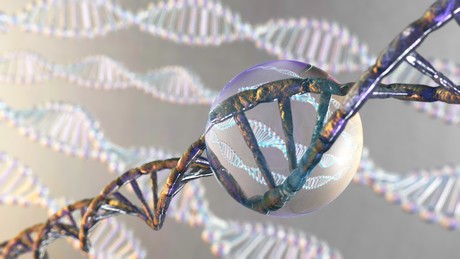Genetic diseases could be corrected by modifying our RNA

As scientists seek to solve the question of whether gene-editing technologies be developed to treat or even cure genetic diseases, chemist Matthew D Disney has taken a different approach to most, developing a small-molecule-based tool that acts on RNA to selectively delete certain gene products.
Developed at The Scripps Research Institute (TSRI), Disney’s deletion tool opens the possibility of creating drugs that can be taken conveniently as pills to correct genetic diseases — by destroying toxic gene products and by chemically controlling the body’s defence mechanisms. His research has now been published in the Journal of the American Chemical Society.
RNAs represent a diverse group of molecules within cells that act like the cells’ labourers — reading, regulating and expressing DNA’s genetic instructions. Within our cells, RNAs are constantly in motion. They assemble, they carry out their duties and then they are broken up for recycling by RNA-degrading enzymes, which are chemical scissors that cut apart other molecules.
While about 2% of our genome encodes proteins, 70–80% of the genome is transcribed into RNA, potentially offering significantly more druggable targets, according to Disney. Until recently, however, most researchers considered RNAs undruggable, because of their small size and relative lack of stability.
Disney’s innovation tethers a drug-like molecule — one engineered to bind precisely and selectively to a specific RNA — to a common RNA-degrading enzyme. The small-molecule/enzyme complex is designed to latch onto the undesirable gene product and destroy it. Disney named the technology RIBOTAC, short for ‘ribonuclease-targeting chimeras’.
To test RIBOTAC, Disney chose for his RNA-degrading enzyme RNase L, which is a critical part of the human antiviral immune response. Present in small amounts in every cell, production of RNase L typically surges on viral infection to destroy the viral RNA and overcome the illness. For the other piece of the RIBOTAC complex, its drug-like molecule, Disney chose Targaprimir-96, a molecule engineered by his lab in 2016 to bind with a microRNA oncogene known to boost cancer cell proliferation — especially in the difficult-to-treat triple-negative breast cancer miRNA-96.
According to first author Matthew G Costales, a graduate student in the Disney lab, destroying the oncogene led to a reawakening of the cancer cell’s innate self-destruct program, via an increase in the FOXO1 gene. This ultimately spurred the death of the malignant cells.
“Anchoring our previous work with Targaprimir-96 to the targeted recruitment of RNase L, we were able to program the RIBOTAC’s approach to only degrade cells that highly express the miRNA-96 oncogene, thus allowing FOXO1 to signal the selective destruction of triple negative breast cancer cells,” said Costales.
Awakening the body’s ability to kill its own cancer by exploiting cells’ RNA degradation system offers a novel approach to attacking cancer, Disney said. He added that RIBOTAC has potentially broad applications for cancer and other gene-driven diseases as well.
Disney’s lab has spent many years developing a computational method called Inforna to match RNAs with adequate stability and structure to small, drug-like molecules capable of binding to them. His technique led to the development of Targaprimir-96 and multiple other disease-modifying compounds, some of which are now moving towards clinical development.
“Since it is now known that RNA is a key driver in nearly every disease, optimisation of this approach that turns a cell’s natural defences towards destroying disease-causing RNAs is likely broadly applicable,” he said. “We will be laser-focused on diseases for which there are no known cure and have a poor prognosis, such as hard-to-treat cancers and incurable human genetic disease.
“I am excited to see where we and others ultimately take this.”
Babies of stressed mothers likely to get their teeth earlier
Maternal stress during pregnancy can speed up the timing of teeth eruption, which may be an early...
Customised immune cells used to fight brain cancer
Researchers have developed CAR-T cells — ie, genetically modified immune cells manufactured...
Elevated blood protein levels predict mortality
Proteins that play key roles in the development of diseases such as cancer and inflammation may...





